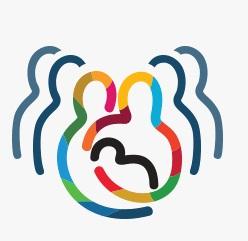
The National Institutes of Child Health and Human Development (NICHD) and US Department of Health and Human Services (DHHS) have awarded a grant to Christine McGrath, Associate Professor of Global Health, and Grace Aldrovandi, Professor of Pediatrics at UCLA, to evaluate the association between maternal HIV infection, breast milk, and the infant gut microbiome.
“HIV-exposed uninfected (HEU) children get sick more often and do not grow as well as children born to HIV-negative mothers,” McGrath said. “While the mechanisms responsible for poor growth and increased risk of infection in HEU infants are unclear, our recent evidence suggests differences in the infant gut microbiome. Breast milk seeds and feeds the infant gut microbiome, contributing bacterial communities and the oligosaccharides to nourish the gut bacteria.”
Understanding how breast milk influences the infant gut microbiome and determining whether the composition of human milk oligosaccharides (HMO) is associated with growth, diarrhea, pneumonia, and other health outcomes of infants is a main purpose of the study.
HMOs are prebiotics, supporting growth of ‘good’ gut bacteria and influencing development of the immune system. Little is known about the relationship between specific HMOs and bacterial communities that may be associated with growth and illness in HEU infants.
“Despite significant global efforts to reduce child malnutrition, available interventions have not had desired impact. HMOs may be a feasible intervention to improve growth and morbidity in HEU infants.”
“Results from this longitudinal study will provide critical data to optimize growth and health outcomes in children born to HIV infected women,” McGrath said. “This will be particularly relevant to children in sub-Saharan Africa, a region where interactions between undernutrition and high HIV prevalence compromise childhood growth and health.”
An estimated 7.1 million children under five years old are HIV-exposed but uninfected (HEU). Roughly one million more are born each year. McGrath notes that while steps have been taken to address the needs of this group, they still remain at risk of serious medical ailments.
“Despite the success in global health efforts to prevent mother-to-child transmission of HIV, there is a growing and often overlooked HEU population with substantially higher risk of growth faltering, infectious illness, and death than HIV-unexposed uninfected (HUU) infants.”
The study will involve hands-on treatment of both HEU and HUU infants and women.
“We will prospectively enroll and follow HIV-infected and HIV-uninfected women and their infants in western Kenya, a region with high HIV prevalence and poor childhood growth,” McGrath explained. “[We plan to] identify breast milk associations with morbidity and linear growth in HEU infants.”
Dr. McGrath’s research focuses on the epidemiology of HIV in women and children with a focus on improving growth and nutrition in early childhood. She has been based in Kenya since 2015 and been involved in clinical trials and epidemiologic studies to identify interventions to reduce childhood mortality, growth faltering and malnutrition, and perinatal HIV transmission since 2007. McGrath is affiliated with the Global Center for Integrated Health of Women, Adolescents, and Children (Global WACh), the Kenya Research and Training Center, and Treatment, Research and Expert Education (TREE).